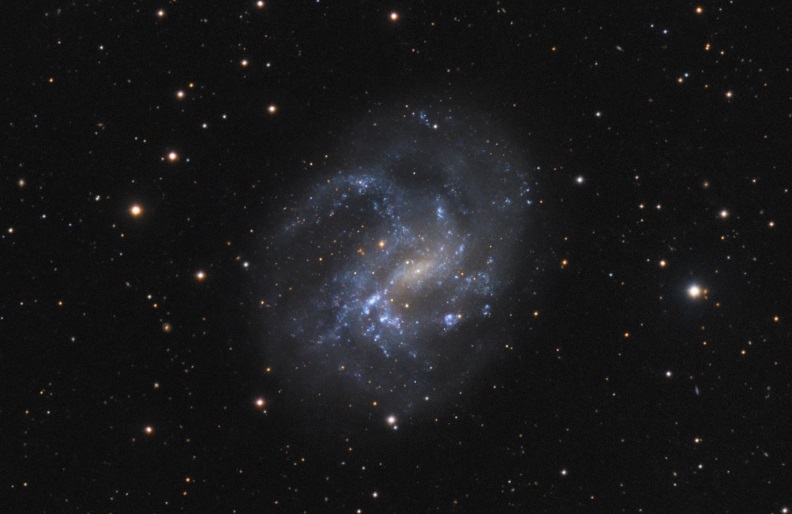Scientists have measured the mass of a black hole in a neighboring dwarf galaxy known as NGC 4395, and their surprising findings cast new light on our understanding of these strange stellar objects.
An international team of astronomers found that the black hole which lies at the center of the galaxy has a mass about 10,000 times that of our sun, according to a study published in the journal Nature Astronomy.
While this sounds like a lot, this figure is actually around 40 times smaller than previous estimates. Furthermore, this mass is among the smallest central black hole masses ever reported.
The general consensus among scientists who study our universe is that most galaxies with the mass of our Milky Way or larger contain a supermassive black hole at the center. This conclusion is based on our understanding of gas and star motion in the middle of nearby galaxies.
But when it comes to smaller galaxies such as NGC 4395, the picture is much less clear.
“The question remains open for small or dwarf galaxies: Do these galaxies have black holes, and if they do, do they scale the same way as supermassive black holes?” Elena Gallo, a professor from the University of Michigan, said in a statement.
“Answering these questions might help us understand the very mechanism through which these monster black holes were assembled when the universe was in its infancy,” she said.
In order to work out the mass of the black hole, the scientists used a method known as “reverberation mapping.” Essentially this involves measuring the radiation emitted from a ring of matter surrounding the black holes known as an “accretion disk.” Intriguingly, this black hole is the smallest ever found using this technique.
According to the researchers, the latest findings expand our knowledge of black holes and their companion galaxies, especially when it comes to understanding the relationship between the two.

